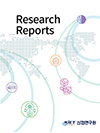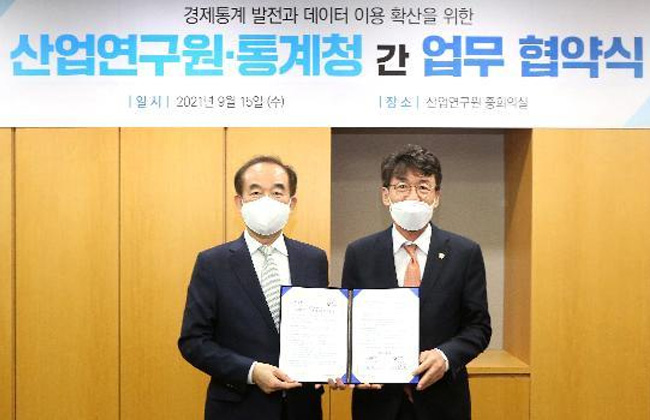Research Reports

COVID19 pandemic requires many countries, including Korea, to adopt a new approach to solve the supply chain problem. One of the most important strategies for Korea in the recent rapidly changing trade environment is building a stable supply chain in the core strategic field. In that context, Korea is implementing two important strategies. One is to reduce Korean companies’ dependence on China, a major economic partner, and the other is to deepen economic relations with major countries to build supply chains.Under the trend of technological competition and supply chain reorganization arising from the U.S.-China conflict, it is necessary to anticipate changes in GVC and come up with countermeasures.
Conflict between the U.S. and China is a main factor that limit the movement of products, technology, and resources on GVC, leading to weakening of GVC. Weakening GVC and restrictions on free trade due to the U.S.-China conflict are also a major threat to Korea. This study predicts the impact of the US-China supply chain reorganization on Korea and future GVC changes after COVID-19, and derives policy implications for Korea. The purpose of this study is to identify changes in trade patterns between Korea, China, U.S. in industries or items subject to the U.S.-China conflict from a global value chain perspective and to seek countermeasures on our industries.
The main content of the study is to analyze trade trends in the four major industries before and after the COVID19 pandemic. The production network of industries and items subject to supply chain reorganization is analyzed from the perspective of the value chain. In particular, the changes in trade patterns and GVC effects of these industries are identified, and the impact on Korean industries is analyzed from various aspects. In addition, the possibility of structural changes in GVC due to the U.S.-China conflict is discussed through various factors and issues. It identifies the impact on trade and industry through a survey of companies included in the four major industries.
Survey results are utilized to establish countermeasures. We also analyze the impact on corporate performance caused by changes in supply chain management empirically. It presents explicit results on how supply chain management by industry affects corporate performance, focusing on the four major industries closely related to supply chain management. As a result of investigating the types that companies are considering in relation to the reorganization of the supply chain, 89.8% of companies said they would “keep their domestic or overseas
production facilities as they are.” According to the survey results, more than half of the companies answered that they were negatively affected in the export sector when there are changes in the supply chain. Only 1.4% of the companies said they were preparing countermeasures to cope with the reorganization of the supply chain, indicating that most of the companies had no countermeasures for the reorganization of the supply chain. As a result of evaluating the effectiveness of policy measures, the proportion of positive responses in most items exceeded 80%. When evaluating the effectiveness of measures to strengthen the competitiveness of companies, the proportion of positive responses in most items was quite high.
Looking at the analysis results of the effect of supply chain management on corporate performance, it was confirmed that the management of supply chain had a positive effect on corporate performance in the mineral industry. It can be seen that the impact of the supply chain on corporate performance after COVID-19 still has a positive effect, but the magnitude of the impact decreases significantly. In the semiconductor industry, supply chain management was found to have a positive effect on corporate performance. Overall, results similar to those of the mineral industry were obtained. In the case of drugs, it was found that the effect of supply chain management had a positive effect only before COVID19 period, but no effect afterwards. It was confirmed that battery supply chain management had a positive effect on corporate performance. However, it was found that the influence of the supply chain was relatively small in 2019~2020

The works on this page are licensed for fair use under the provisions of the Korea Open Government License. See kogl.or.kr for more information.
Please enter the security text below
to prevent email collection
Please check the information of the person in charge.
연구과제 제안이 접수되었습니다.
신청이 접수되었습니다.


View Summary
코로나19 발생 이후 대부분의 고용 관심사가 항공 및 여행서비스, 음식·숙박 서비스 등 주로 서비스 업종에 집중된 상황에서 본 연구는 최근 그 중요성이 강조되고 있는 제조업의 고용변화를 살펴보았다. 분석에 따르면, 코로나19 이후 제조업 고용은 비교적 큰 충격 없이 빠르게 회복하는 모습을 보이고 있다. 제조업 고용은 서비스업에 비해 큰 충격 없이 유지되고 있고, 코로나19 직후 2020년 상반기에 약간 하락하였지만 하반기부터 회복 추세를 보이고 있으며, OECD 주요국의 제조업과 비교하여도 일본과 함께 고용 충격이 비교적 작게 나타나고 있다. 그러나 전반적으로 양호한 고용 성적에도 불구하고 제조업 내 특성 별로는 차이가 나타나는 것으로 보인다. 종사상 지위 별로 보면, 임시·일용직, 고용원이 있는 자영업자에서 고용 충격이 상대적으로 크게 나타났고, 상용직과 고용원이 없는 자영업자는 큰 충격이 없는 것으로 나타났다. 제조업 규모별로는 300인 이상의 경우 코로나 발생 초기 약간의 충격 이후 고용이 빠르게 반등하면서 코로나 이전보다 고용이 더 증가한 반면, 이보다 작은 규모의 제조업체들의 경우 고용 회복이 더디게 나타나고 있다. 고용의 중장기, 단기 추세선을 비교한 결과 제조업 업종에 따른 차이를 보였다. 코로나 발생 이전 3년간의 추세선을 2020년 1월부터 연장한 선과, 2020년 1월부터의 실제 자료를 이용한 단기 추세선을 비교한 결과, 의약품은 코로나19 발생 이전부터 시작하여 코로나19 발생 이후에도 견조한 증가세를 유지하고 있으며, 전자부품·컴퓨터, 기타운송장비, 가구는 코로나19 이후 오히려 고용 추세가 개선되었다. 그러나 다수 업종은 코로나 발생 이후 고용이 하락하였는데, 특히, 비금속광물, 1차금속, 금속가공 분야나 인쇄·기록매체 업종에서 하락이 상대적으로 크게 나타났다.
The following information is provided.
inform@kiet.re.krPlease complete the CAPTCHA below.
[전지적키에트시점] (Eng sub)심상치 않은
국내 대기업 움직임??
KIET 시점에서 보는 미래 로봇 산업 전망은
어떨까요?
경제전문가가 알려드립니다!
(산업연구원 박상수 실장)


